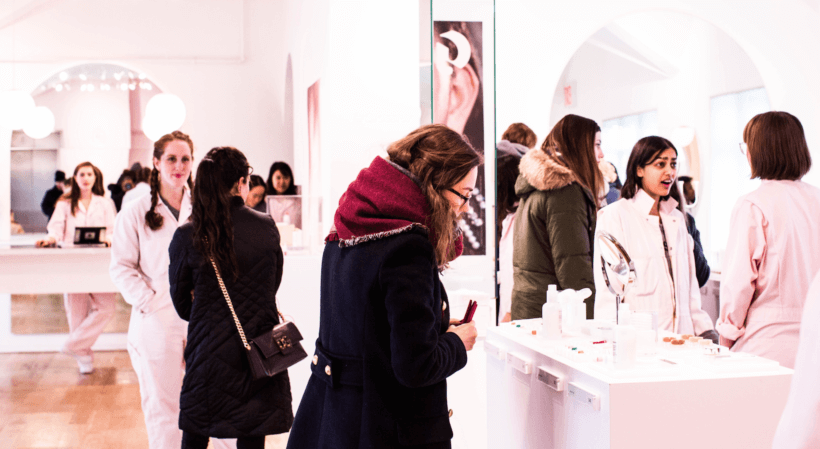Pop-up shops are temporary storefronts that allow brands to connect with their customers in a brick-and-mortar space for a short period of time. For e-commerce brands, this usually means providing customers with an exclusive opportunity to shop in a brick-and-mortar location. For example, when popular makeup brand Glossier opened temporary pop-up storefronts throughout the U.S., lines wrapped around the block as customers waited for the chance to shop in-person for products that had traditionally only been available online.
Even traditional brick-and-mortar stores can benefit from pop-up shops, as the experience allows business owners to advertise a new offering, attract new customers and gain valuable data about their products.
So, what makes a successful pop-up shop?
The biggest draw for customers is exclusivity, which means that you’ll want to offer something special. It could be a product offered only at the pop-up or an experience that is only offered for the duration of the pop-up. These exclusive offerings can help drum up excitement and get customers motivated to attend.
A successful pop-up shop experience comes down to strong branding, thorough marketing and a solid concept.
StartupNation exclusive discounts and savings on Dell products and accessories: Learn more here
Let’s look at a few successful examples of pop-up shops for inspiration:
Glossier
The makeup brand known for its pink packaging and low-key products has earned the brand notoriety on Instagram and among internet influencers. Because the brand’s products are only sold online or at their three retail shops, their past pop-ups in locations where they don’t have stores have been hugely successful — so successful, in fact, that Glossier is opening several permanent brick-and-mortar stores in Seattle, Los Angeles and London.
The lesson? Consider taking your e-commerce brand offline to connect with customers in person.
Related: What Makes Pop-Up Retail a Viable Option During a Pandemic?
Bark & Co.
While Bark & Co. is best known for its dog toy and treat subscription BarkBoxes, the company also sells branded toys in pet supply stores. To get some insight into their customer base, the company’s BarkShop Live pop-up event invited dog owners to bring their best canine friends along with them. At the event, dogs were fitted with collars that monitored their play habits to indicate what toys they liked the most. The benefit was two-fold: owners could then purchase their dog’s favorite toys while Bark & Co. collected valuable customer data on which toys dogs enjoy most.
The lesson? Use innovative experiences and technology to gain insight into your customer’s interests to lead to more sales.
IKEA
To bring attention specifically to IKEA’s dining and kitchen offerings, the brand hosted a pop-up shop called the IKEA Play Cafe, where customers could eat, drink and play. The shop used IKEA’s dining and kitchenware products, bringing customer attention to these product lines while also offering a fun experience for guests.
The lesson? Use your pop-up to highlight one of your product offerings.






